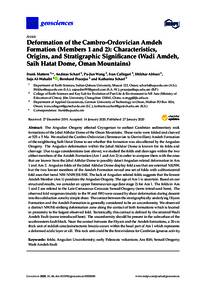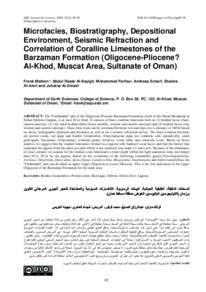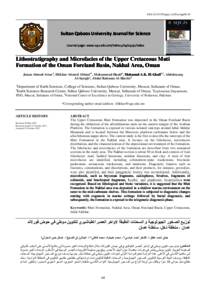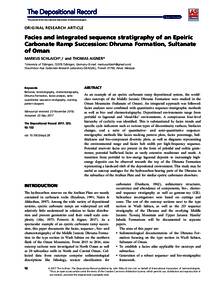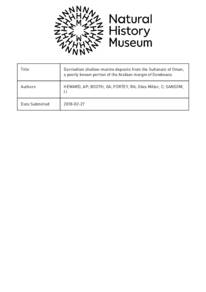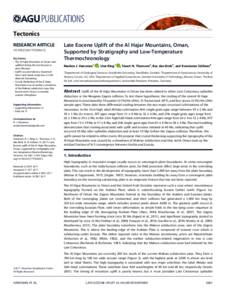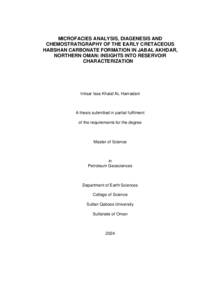Document
Deformation of the Cambro-Ordovician Amdeh formation (members 1 and 2) : characteristics, origins, and stratigraphic significance (Wadi Amdeh, Saih Hatat dome, Oman mountains).
Identifier
DOI: 10.3390/geosciences10020048
Source
Geosciences (Switzerland). v. 10, 2, 48
Contributors
Scharf, Andreas., Author
Wang, Pu-Jun., Author
Callegari, Ivan., Author
Abbasi, Iftikhar., Author
Al-Wahaibiyah, Saja., Author
Pracejus, Bernhard., Author
Scharf, Katharina., Author
Country
Switzerland
City
Basel
Publisher
MDPI AG.
Gregorian
2020-02-01
Language
English
Subject
English abstract
The Angudan Orogeny affected Cryogenian to earliest Cambrian sedimentary rock formations of the Jabal Akhdar Dome of the Oman Mountains. These rocks were folded and cleaved at 525 ± 5 Ma. We studied the Cambro‐Ordovician (Terreneuvian to Darriwillian) Amdeh Formation of the neighboring Saih Hatat Dome to see whether this formation was also affected by the Angudan Orogeny. The Angudan deformation within the Jabal Akhdar Dome is known for its folds and cleavage. Due to age considerations (see above), we studied the folds and cleavages within the two oldest members of the Amdeh Formation (Am 1 and Am 2) in order to compare them with the ones that are known from the Jabal Akhdar Dome to possibly detect Angudan‐related deformation in Am 1 and Am 2. Angudan folds of the Jabal Akhdar Dome display fold axes that are oriented NE/SW, but the two lowest members of the Amdeh Formation reveal one set of folds with subhorizontal fold axes that trend NW‐NNW/SE‐SSE. The lack of Angudan‐related folds suggests that the lowest Amdeh Member (Am 1) postdates the Angudan Orogeny. The age of Am 1 is uncertain. Based on our structural results, we consider an upper Terreneuvian age (late stage 2) for Am 1. The folds in Am 1 and 2 are related to the Late Cretaceous–Cenozoic Semail Orogeny (term introduced here). The observed fold vergences (mainly to the W and SW) were caused by shear deformation during descent into the subduction zone by simple shear. The contact between the stratigraphically underlying Hiyam Formation and the Amdeh Formation is generally considered to be an unconformity. We observed a distinct NW/SE‐striking deformation zone along the contact of both formations which is located in proximity to the largest observed fold. Tectonically, this contact is defined by the sinistral Wadi Amdeh Fault (name introduced here). The unconformity should be present in the subsurface of the southwestern fault block. Near the contact between the Hiyam and the Amdeh formations, a 20 cm thick unit of reddish cataclasite/tectonic breccia occurs within the basal part of Am 1 which represents a deformed acidic layer or sill. This rock unit could be the first evidence for Cambrian igneous activity.
ISSN
2076-3263
Resource URL
Category
Journal articles

